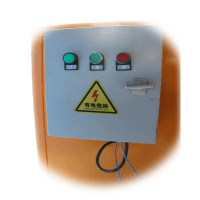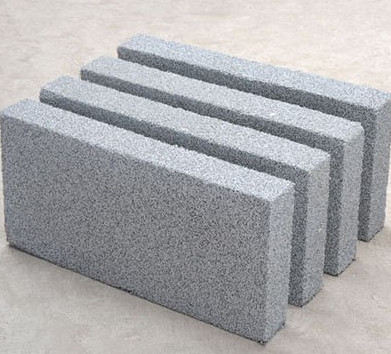Professional solutions on concrete addtives, Concrete Foaming Agent, Superplasticizer, CLC Blocks Additives, and foaming machine
(Concrete Defoamer Overview)
Formation and Hazards of Concrete Bubbles
Concrete is a stone made by mixing water, sand, rocks, and some chemical additives, if necessary, in specific proportions—the mixing action while making concrete leads to the appearance of bubbles.How is the foam in concrete formed?
1) When concrete is poured and pounded, the local liquefaction of water and gas is analyzed and floated up, and the foam is formed when it accumulates in the aggregation area;
2) In order to increase the strength of concrete, the mixing of concrete will often add a certain amount of chemical additives; most of these additives contain surfactants, and it is straightforward to produce foam. 3. in the vibration mixing equipment, the concrete will not be able to be used in the process;
3 ) Air is mixed in the shock mixing process of the equipment, forming foam;
4) The steel formwork is too tightly closed, no air vents are set, and the concrete is discharged to produce a kind of air pocket after the formation of air bubbles.
If the foam problem still needs to be solved in time, what harm will the concrete foam produce?
1) A large number of air bubbles caused by too many air holes on the surface of the concrete, a pitting phenomenon, affecting the surface appearance of the concrete;
2) the generation of foam will affect the mechanical strength and efficiency, reduce the life of the building, and produce relatively large quality problems;
3) reduces the corrosion resistance of concrete structures, reduces the adequate thickness of the protective layer of reinforcing steel due to the appearance of a large number of air bubbles on the surface of the concrete, and accelerates the process of carbonization of the concrete surface;
4) Reduce the section volume of concrete due to the giant bubbles, resulting in the internal concrete not being dense, thus reducing the strength of concrete.
Antifoam agent mechanism
How does a concrete defoamer solve the problem of concrete foaming?
Concrete defoamer mechanism of action is mainly divided into three forms: foam breaking, foam inhibition, and defoaming. The use of the method to join the concrete, which contains chemical components, will reduce the surface tension of the water to achieve rapid foaming; and good compatibility, not bleaching oil, not precipitation, will not affect the strength of the concrete; at the same time, the applicability is also extensive, in the strong acid, alkali, high-temperature environment can be achieved quickly broken foam, long-term foam suppression.
Adding antifoam agents in concrete can prevent the generation of air bubbles in the concrete mix or reduce the original air bubbles. The defoamer added in the test is a surfactant that can decrease the surface tension of the liquid phase, the wetting angle is reduced to a certain extent, and the bubble that is free from the adsorption of the solid surface and escapes or breaks out, so adding defoamer can to a certain extent to eliminate the bubbles in the concrete, and effectively prevent or eliminate the production of the surface of the concrete honeycomb, pockmarked surface so that the surface of the concrete has a high degree of smoothness and gloss, surface performance and so on.
Although the use of defoamers has a long history, different defoaming systems require different types of defoamers. Because of the other chemical structures and the nature of the defoamer's role in the mechanism so far, it is still not agreed upon. Generally accepted defoamer mechanisms there are the following three kinds:
1) The Ross hypothesis adds an antifoam agent to the foaming system, and the antifoam agent molecules come close to the foam.
First, the defoamer attached to the foam liquid film began to invade and gradually expand in the bubble film, making the local thickness of the bubble film plummet, ultimately leading to the bubble merging or bursting.
2) Antifoaming mechanism of hydrophobic solid particles: After adding hydrophobic solid particles to the foaming liquid, the hydrophobic particles will immediately adsorb the hydrophilic end of the surfactant in the foaming liquid so that the outermost layer of hydrophobic particles becomes the hydrophilic end of the surfactant, which is hydrophilic, and enters into the aqueous phase. A large number of hydrophobic solid particles will adsorb the surfactant of the foaming system, which makes the concentration of the surfactant in the foaming liquid drop abruptly and results in the bursting of bubbles. This antifoaming mechanism can not explain the mechanism of other antifoaming agents, and it is too one-sided.
3) Antifoaming mechanism of polyether-modified silicone oil as an antifoaming agent of polyether-modified silicone oil as an antifoaming agent defoaming process explanation, the most complete antifoaming mechanism: "bridging – stretching" mechanism, "bridging – moisture removal" mechanism. The complete defoaming mechanisms are the "bridging-stretching" and "bridging-wetting" mechanisms.
"Bridging – stretching" mechanism: the surface tension of the defoamer is much lower than the surface tension of the liquid film; defoamer droplets can continue to spread on the surface of the liquid film, in-depth, the foam continues to thin the local liquid film, and eventually form the oil in the water in the middle of the bridge, the oil phase, the water phase surface tension difference is very far, the oil phase in The surface tension of the oil phase and water phase is very different, and the oil phase is constantly pulled by the surrounding water phase, which is elongated and thinned, and the liquid film is destroyed after the deformation exceeds a specific range, resulting in the rupture of the foam.
The mechanism of "bridging-drainage": after adding solid hydrophobic particles antifoam agent into foaming liquid, the antifoam agent is immediately distributed in the foam system, and the hydrophobic particles are fixed on the surface of the foam liquid film, and when there is enough hydrophobic angle between the solid particles and the liquid film, the solid particles, and the surrounding liquid film have the opposite contact surface, which becomes the bridge between the surrounding liquid film and the liquid film, and the solid particles become the bridge between the surrounding liquid film. When there is enough hydrophobic angle between the solid particles and the liquid film, the solid particles have opposite contact surface with the surrounding liquid film, become the bridge between the surrounding liquid film, and finally can break through the foam liquid film and enter into the foam.
The mechanism of "bridging – stretching" is based on the unique low surface tension of silicone oil, which is very easy to spread, pointing out that the defoamer droplets can produce different degrees of deformation, but it is difficult to explain the difference between silicone paste and pure silicone oil by this mechanism; "bridging – moisture drainage" mechanism is based on the fact that the solid particles have enough hydrophobic angle to contact with the surrounding liquid film. The damping" mechanism is based on the lipophilicity of silicone oil, which can explain the functioning principle of low-viscosity polyether-modified silicone oil.
Concrete additives Supplier
TRUNNANO is a reliable concrete additives supplier with over 12-year experience in nano-building energy conservation and nanotechnology development.
If you are looking for high-quality concrete additives, please feel free to contact us and send an inquiry. (sales@cabr-concrete.com)
We accept payment via Credit Card, T/T, West Union, and Paypal. TRUNNANO will ship the goods to customers overseas through FedEx, DHL, by air, or by sea.
(Concrete Defoamer Overview)






